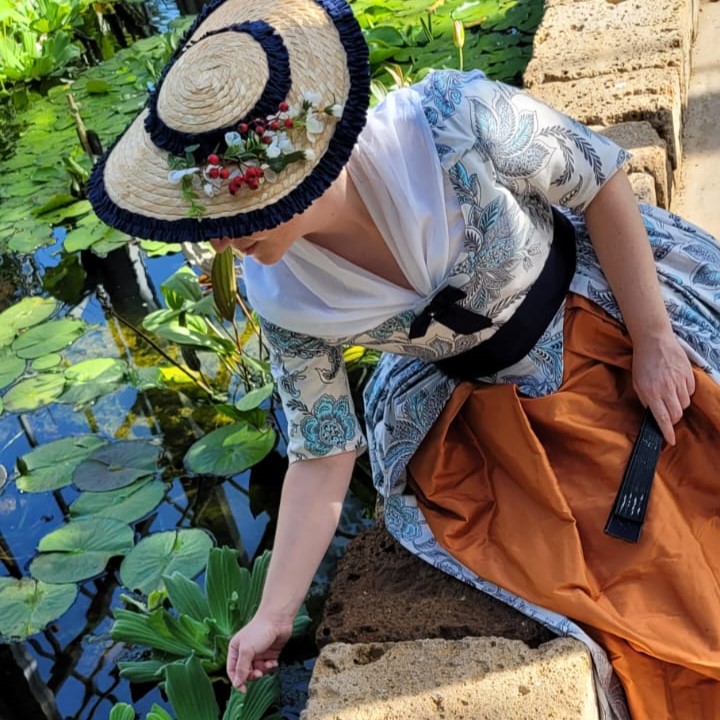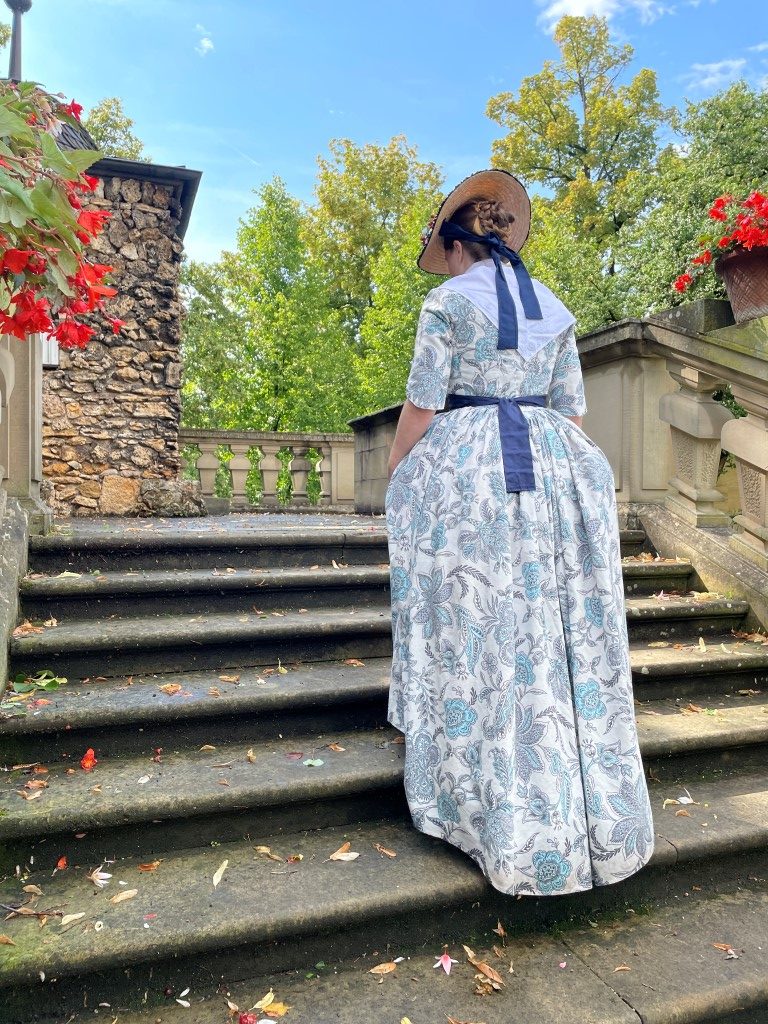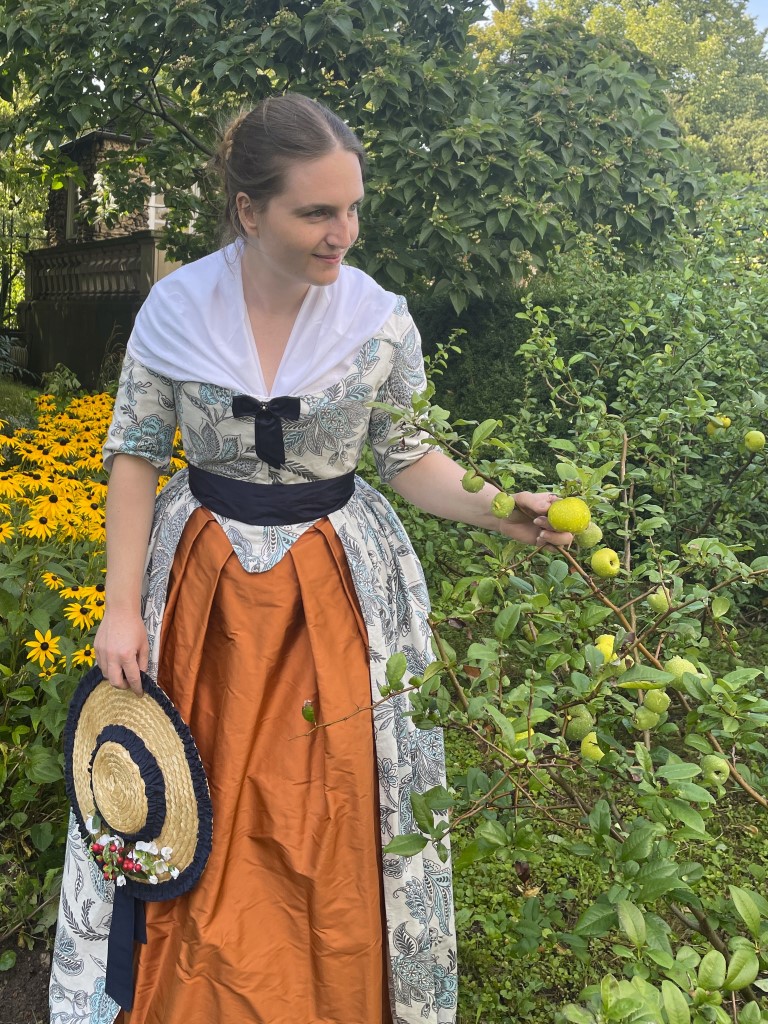Even after completing the project, it still remains unclear to me why this style of clothing is often referred to as “Italian.” Sometimes, museum websites simply use the term “English Gown” or “Robe à l’Anglaise.” However, these terms refer to a folded and sewn down back section that transitions into the skirt. In contrast, with “Italian” dresses, the back is simply divided by seams. Therefore separate upper pieces are cut out, to which the folded skirt is sewn later. This dress form can mainly be found in the last quarter of the 18th century. However, why this is supposed to be an Italian trend puzzles me. That’s enough about the origin of the term; now a few words about my own project:

I sewed the dress from a bedsheet – as I often do – which provided me with plenty of fabric. This allowed me to give the skirt a small train, which unfortunately got terribly dirty during the first wear. As always, a plain linen fabric serves as the lining, and the sewing thread is also made from this fiber. Everything was hand-sewn, following the sewing techniques from “Costume Close-up” and “Fitting&Proper.”

To create an authentic pattern from my self-made Rococo basic pattern, I referred to the Polonaise (p. 37ff.) and the Open Gown (p. 40ff.) from the well-known “Patterns of Fashion 1.” By the way, such a large-scale pattern can be found on an 1780s dress (AC6978 91-11-1) from the Kyoto Costume Institutes, as well as on a piece of fabric (X.397.1) in the MET collection, just to name a few of my inspirations.

In the pictures, I’m wearing the dress together with a pearl-adorned bow and a blue silk ribbon, a simple cotton scarf, my old bergere hat, and the silk petticoat that actually belongs to my Victorian ball gown. Not visible are the stockings, chemise, stays, underskirt, and pocket hoops, all of which are also self-made. Machine seams can only be found on the old hat and, of course, on the purchased shoes.
